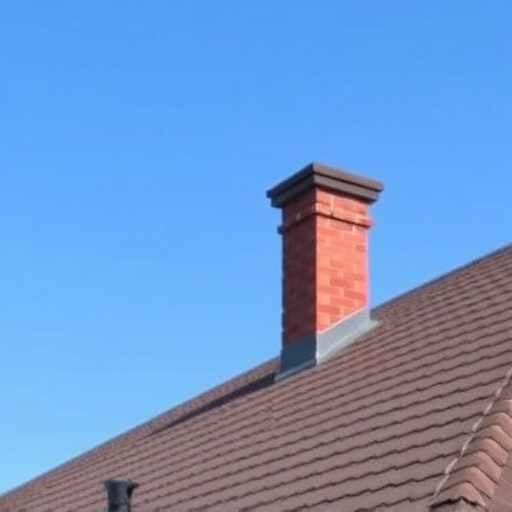The text explores the growing importance of energy-efficient roofing options in promoting sustainability and reducing environmental impact. Traditional roofs contribute to high carbon footprints, but innovative alternatives like flat roofs, plant-based composites, cool roofs, and solar-integrated systems offer significant advantages. These solutions enhance structural integrity, improve insulation, reduce energy consumption, lower greenhouse gas emissions, and extend roof lifespans. Green infrastructure, such as roof gardens and water harvesting systems, further contributes to sustainability goals. Both homeowners and commercial property managers are embracing these eco-friendly practices for financial savings and environmental benefits. Governments worldwide incentivize sustainable roofing through tax benefits, fostering a greener built environment. The future of roofing focuses on low-energy designs, solar integration, and advanced materials, aligning with global sustainability ambitions.
Roofing plays a pivotal role in achieving sustainability goals, offering more than aesthetic appeal. Understanding the environmental impact of roofing materials is crucial for creating eco-friendly structures. This article delves into various aspects of sustainable roofing, exploring energy-efficient materials, cool roofs, plant-based options, and innovative techniques like roof gardens. We examine how these practices reduce carbon footprints, mitigate urban heat islands, and provide cost savings. Discover the importance of government incentives and emerging trends shaping the future of energy-efficient roofing solutions.
- Understanding the Impact of Roofing on Sustainability
- The Role of Energy-Efficient Materials in Roofing
- Benefits of Cool Roofs: Reducing Urban Heat Island Effect
- Exploring Plant-Based and Organic Roofing Options
- Low-Energy Roofing Techniques for Residential Properties
- Green Infrastructure: Integrating Roof Gardens and Water Harvesting
- Sustainable Roofing Practices in Commercial Buildings
- Longevity and Cost Savings with Eco-Friendly Roofing Solutions
- Government Incentives and Tax Benefits for Sustainable Roofing
- Future Trends in Energy-Efficient and Sustainable Roofing
Understanding the Impact of Roofing on Sustainability
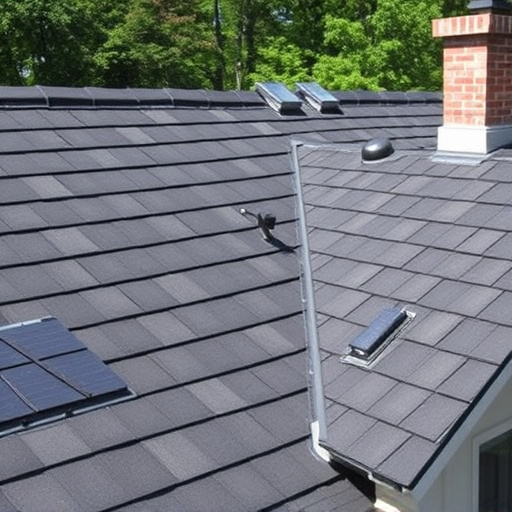
Roofing plays a significant role in achieving sustainability goals due to its substantial impact on energy consumption and overall environmental health. Traditional roofing materials can contribute to a building’s carbon footprint through high energy requirements for manufacturing and poor insulation properties, leading to increased energy usage for heating and cooling. Understanding this impact is crucial when considering sustainable alternatives.
Energy-efficient roofing options are gaining popularity as architects and builders embrace eco-friendly practices. Flat roofs, for instance, have long been recognized as a smart choice for energy optimization due to their ability to maximize natural insulation. Moreover, low-maintenance eco-friendly roofs incorporate materials like recycled content or plant-based composites, reducing environmental impact while offering durability and aesthetic appeal. These energy savings through roof design contribute to broader sustainability goals, making them a compelling choice in the pursuit of green buildings and net-zero energy consumption.
The Role of Energy-Efficient Materials in Roofing
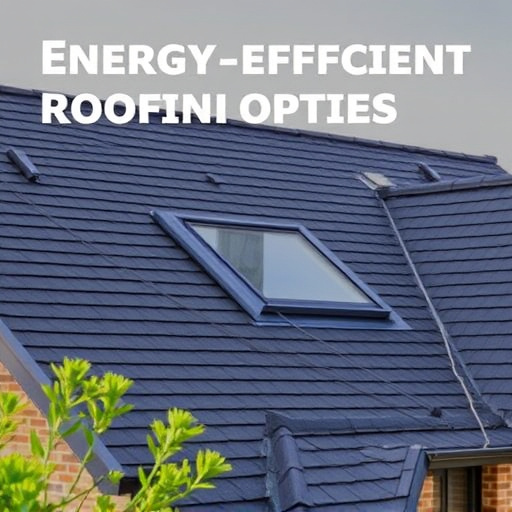
The choice of materials plays a pivotal role in achieving sustainability goals for any roofing project. Energy-efficient roofing options are gaining popularity as architects and builders strive to create eco-friendly spaces. Incorporating green building materials for roofs offers more than just visual appeal; it significantly reduces energy consumption and carbon footprint. One innovative approach is integrating solar technology into roofing systems with built-in solar panels, which harness the sun’s power while providing shelter.
Furthermore, advancements in material science have led to the development of products that not only minimize environmental impact but also enhance structural integrity. These materials contribute to passive energy recovery from roofing, reducing reliance on active heating and cooling systems. By embracing such innovations, the construction industry can make substantial strides towards a more sustainable future while ensuring durable and efficient roofing solutions.
Benefits of Cool Roofs: Reducing Urban Heat Island Effect
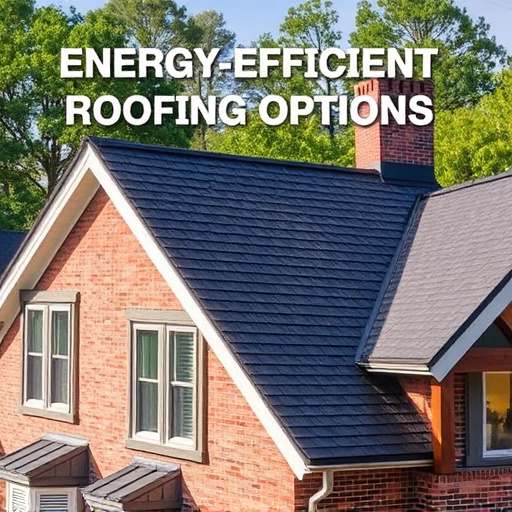
Roofs play a significant role in mitigating the urban heat island effect, especially in densely populated areas. Traditional roofing materials absorb and retain sunlight, leading to increased indoor temperatures and higher cooling demands. This is where energy-efficient roofing options like cool roofs come into play. Cool roofs are designed to reflect a greater portion of sunlight and emit heat, thereby reducing the transfer of that heat into buildings.
By adopting eco-friendly roofing options for homes, property owners not only contribute to sustainability but also enjoy long-term cost savings on energy bills. The reflective properties of cool roofs can significantly decrease peak cooling loads, leading to reduced reliance on air conditioning systems and lower greenhouse gas emissions. Additionally, thermal insulation for flat roofs, a key component in many cool roof systems, provides added comfort and can extend the lifespan of roofing materials.
Exploring Plant-Based and Organic Roofing Options
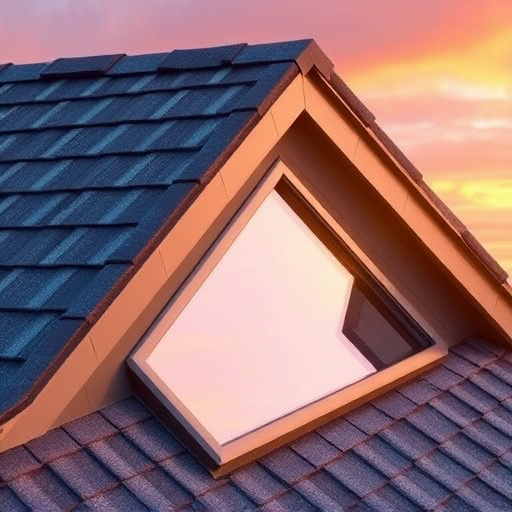
In the pursuit of sustainable architecture, exploring alternative roofing materials is a crucial step. Plant-based and organic roofing options are gaining traction as eco-conscious architects and builders seek to reduce their environmental footprint. These innovative choices not only contribute to a greener planet but also offer excellent performance and durability. By incorporating natural elements like vegetable oils, rubber, and recycled content, these roofing systems can significantly lower carbon emissions compared to traditional materials.
One notable trend is the integration of renewable energy sources into roofing technologies for sustainability. Commercial energy-efficient roofing solutions, such as those with built-in solar panels, are transforming buildings into micro-power plants. This approach not only reduces reliance on conventional energy sources but also provides long-term cost savings for building owners. With rapid advancements in roofing systems, the future of sustainable construction looks bright, promising a greener and more environmentally conscious built environment.
Low-Energy Roofing Techniques for Residential Properties
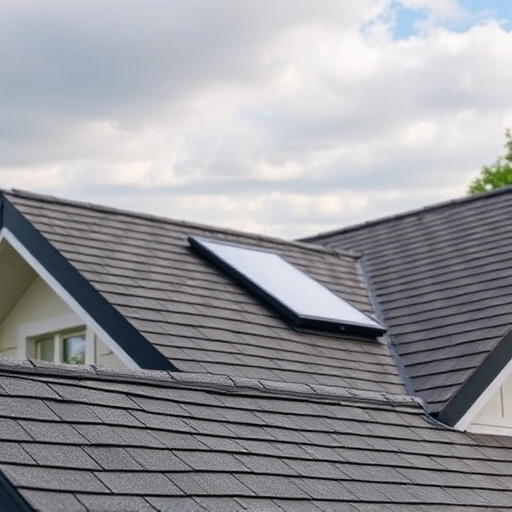
Many homeowners are now turning to low-energy roofing techniques as part of their sustainability goals. One popular choice is reflective membrane roofing systems, which work by reflecting a significant portion of sunlight and heat away from the building’s interior. This not only reduces the need for air conditioning but also lowers energy consumption and greenhouse gas emissions. By choosing energy-efficient re-roofing options like these, homeowners can contribute to mitigating climate change while enjoying lower utility bills.
Additionally, low-energy roofs for commercial buildings can incorporate various innovative designs. For instance, green roofing systems involve planting vegetation on the roof, which provides excellent insulation and helps absorb rainwater. These eco-friendly solutions not only reduce energy costs but also enhance the building’s overall aesthetics and create a more sustainable urban environment. Embracing such approaches is a step towards a greener future, ensuring that our homes and businesses become more compatible with our planet’s ecosystem.
Green Infrastructure: Integrating Roof Gardens and Water Harvesting
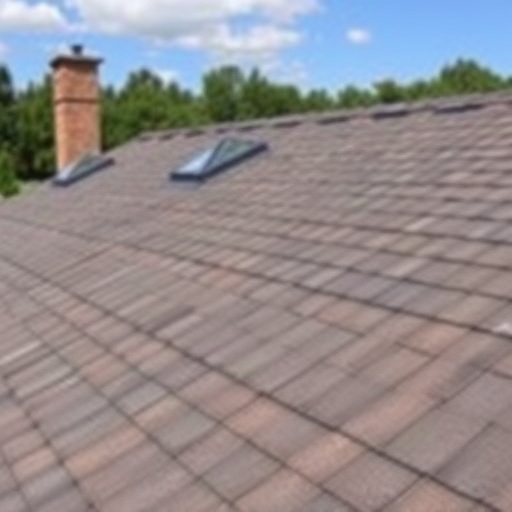
Roof gardens and water harvesting systems are prime examples of green infrastructure that can significantly contribute to sustainability goals. By integrating natural elements into roofing, buildings can achieve substantial energy savings through roof design. These systems not only reduce the urban heat island effect but also provide insulation, helping to lower heating and cooling costs. Additionally, they offer an opportunity for biodiversity by creating habitats for local wildlife, enhancing the overall ecosystem.
Beyond these benefits, green infrastructure promotes sustainable roofing practices by allowing for water harvesting—a valuable resource for irrigation or even toilet flushing in buildings. This not only reduces strain on municipal water supplies but also mitigates stormwater runoff, a key concern in urban areas. When considering energy-efficient re-roofing options, integrating green infrastructure is a holistic approach that can lead to significant long-term savings and environmental benefits.
Sustainable Roofing Practices in Commercial Buildings
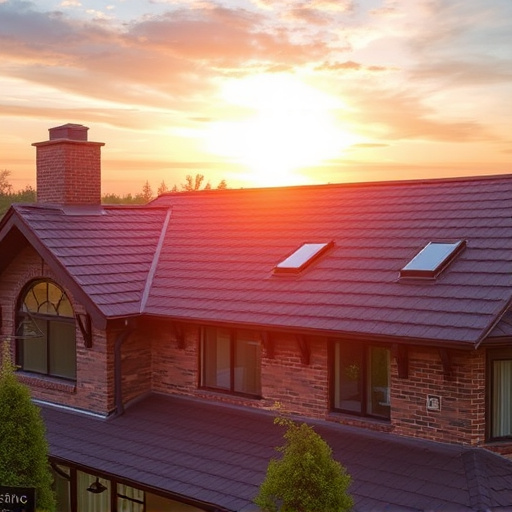
Commercial buildings offer a significant opportunity to integrate sustainable roofing practices and contribute to energy efficiency goals. One key approach is adopting energy-efficient roofing options, such as reflective membrane roofing systems. These systems are designed with highly reflective materials that bounce sunlight away, reducing the amount of heat absorbed by the building’s structure. This simple yet effective strategy can significantly lower cooling costs and minimize the urban heat island effect.
Additionally, choosing thermal insulation for flat roofs is another sustainable practice worth considering. High-performance insulation materials help maintain interior temperatures, decreasing the reliance on heating and cooling systems. By combining these strategies with eco-friendly roof alternatives, like green or living roofs, commercial buildings can further enhance their environmental impact while providing additional benefits such as improved air quality and extended roof lifespan.
Longevity and Cost Savings with Eco-Friendly Roofing Solutions
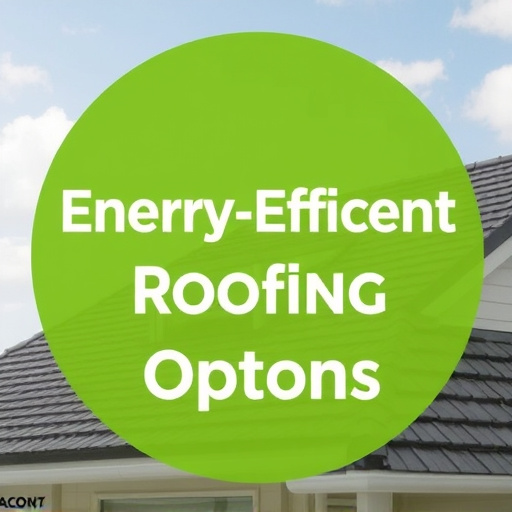
Roofs that prioritize sustainability don’t just benefit the environment; they also offer long-term financial advantages for property owners. Eco-friendly roofing solutions, like those incorporating ventilated roofing systems benefits or made from renewable materials, are designed to withstand harsh weather conditions while minimizing resource consumption. This increased durability translates into reduced replacement costs over time, making them a smart investment.
Choosing energy-efficient roofing options can also lower utility bills significantly. Reflective coatings and lightweight materials help regulate indoor temperatures, reducing the burden on air conditioning or heating systems. By embracing eco-friendly roof alternatives, homeowners not only contribute to a greener planet but also enjoy cost savings that accumulate over the lifespan of their roofs, making sustainable practices both environmentally responsible and economically sound.
Government Incentives and Tax Benefits for Sustainable Roofing
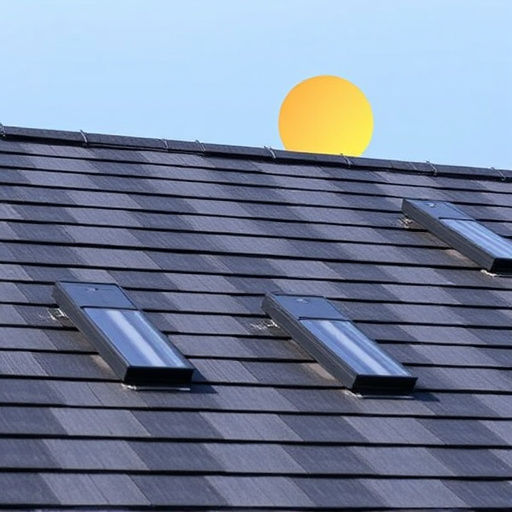
Many governments around the world are promoting sustainable practices, and roofing is no exception. There are numerous incentives and tax benefits available for homeowners and businesses who opt for energy-efficient roofing options. These initiatives aim to encourage the adoption of environmentally friendly practices while reducing carbon footprints. One such popular choice is ventilated roofing systems, known for their enhanced energy efficiency and improved indoor air quality. By allowing better temperature regulation, these systems contribute to significant energy savings, making them an attractive option for those seeking tax breaks and government support.
Additionally, energy-optimized flat roofs are gaining traction as a sustainable roofing solution. They offer excellent potential for solar panel installation, enabling property owners to achieve energy independence. Governments often provide financial incentives and grants to offset the initial costs of installing such systems, making them more accessible and appealing to environmentally conscious individuals and businesses. These incentives not only promote sustainability but also foster a greener and more eco-friendly built environment.
Future Trends in Energy-Efficient and Sustainable Roofing
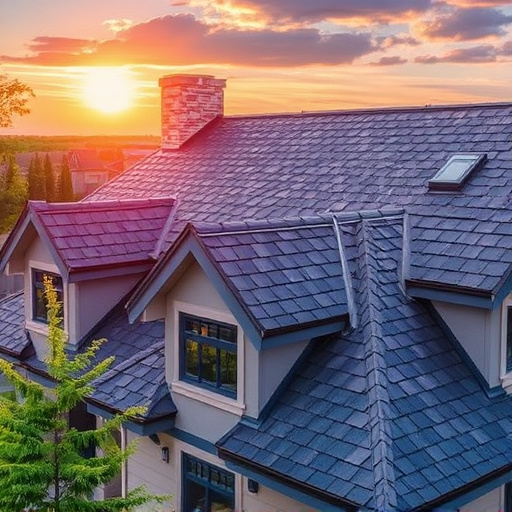
The future of roofing is closely tied to sustainability and energy efficiency. As the world shifts towards greener practices, the demand for low-energy roofs for commercial buildings is on the rise. Architects and builders are exploring innovative solutions that reduce carbon footprints while offering aesthetically pleasing designs. One prominent trend is the integration of solar panels into roofing systems, transforming them from mere protective barriers to powerful resources in the fight against climate change. These solar-powered roofs not only generate clean energy but also provide long-term cost savings for building owners.
Additionally, sustainable roof replacement ideas are gaining traction, encouraging the use of eco-friendly materials and technologies. This includes advanced insulation, cool roofs that reflect sunlight, and water-efficient systems. The market is witnessing a surge in demand for energy-efficient roofing options that offer both environmental benefits and financial savings over time. With ongoing advancements in sustainable building practices, we can expect even more groundbreaking solutions to emerge, shaping the roofing industry’s future and contributing to a greener planet.
In conclusion, energy-efficient roofing options play a pivotal role in achieving sustainability goals. From reducing carbon footprints through innovative materials to mitigating urban heat islands with cool roofs, these solutions offer both environmental and economic benefits. Integrating green infrastructure, such as roof gardens and water harvesting systems, further enhances ecological resilience. With government incentives and growing industry trends pushing for sustainable practices, the future of roofing appears brighter, more eco-friendly, and cost-effective than ever before.
